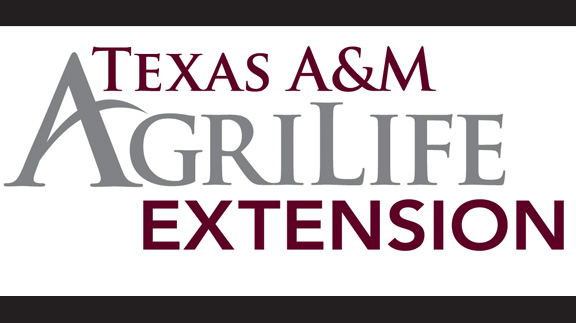Farm & Ranch
Cooke County Crop and Cattle Report for Tuesday, September 12, 2016

By Marty Morgan, Cooke County Ag Agent
We received up to 1 inch of rain last Saturday morning early which was good if you had got some wheat planted. It looks like about 25 percent of farmers have planted wheat and oats so far, while the others are waiting to see the progress of the marching Army Worms. Most of the volunteer wheat and oats has been devoured by Army Worms therefore giving reason for concerns to farmers thinking about drilling in their crops. Some folks sprayed their Bermuda grass pastures to keep the worms from completely destroying it. It’s ironic because most years there isn’t enough grass to worry about spraying going into fall. This year has been quite the exception with plenty of rain and moisture producing more grass than we know what to do with, and a bumper crop of Army Worms. The Milo and Corn harvest is complete with the final county average for Milo at 3250 lbs/acre with average weights of 55 lbs/bu. Corn averaged 80 bu/ac and average weights were 56 lbs/bu. When harvest started it was looking like it would be an above average crop for both Milo and Corn but harvest was strung out because of rains and showers and the delays caused yields to get lighter with each passing week. My records show we received over 34 inches of rain during the Milo and Corn growing season. There were a few hard rains and some flooding occurred several times in fields which sure hurt the crops at the beginning of the growing season, especially the Milo. Anyway it’s been a good year with ample moisture producing lots of grass for all the livestock. The cattle look real good, but the grass has been a little washy from all the rains, so the weight gains may not be as good as we think. Fall weaning is right around the corner and producers are hoping the calf market will get a little stronger before they ship their calves to town. The cattle market was up last week so let’s hope its up again this week as well!
Last Week’s Markets(9-11 to 9-17)—-Dec. 16 Corn was down 4 cents on the week closing at $3.37. Dec. 16 wheat settled at $4.03 on the Chicago board, and $4.17 on the KC board. Nov. 16 Soybeans were down 14 cents on the week and settled at $9.66. Oct. 16 live cattle were up over $3 on the week settling at $108 and Feb. 17 Lives settled at $108 as well. Sept. 16 Feeders settled around $135.5, with the Oct. 16 feeder’s settling at $133. In the local markets six weight Feeder Steers and Heifers were $steady to a few dollars higher on a light run. Steer and Heifer calves were $3-5 lower on very limited offerings as well. Slaughter cows and bulls no good test.
Farm & Ranch
Ag Elsewhere: Wyoming

By Tressa Lawrence
Babies are tucked away in every nook and cranny. Many ranchers across Wyoming have baby animals popping up all over this time of year.
Farm & Ranch
Ag Elsewhere: Montana

By Lindsey Monk
Another load of grain in to keep feeding the calves until the green grass can really start popping.
Farm & Ranch
Meanwhile, Back at the Ranch….

By Rayford Pullen | [email protected]
Spring has sprung and hopefully the rains will continue where our country will heal from the previous droughts and our grasses will thrive. We are especially hopeful for the Panhandle of Texas where our neighbors and friends have been dealt a deadly blow to homes, ranges, livestock, and people. Keep them in your prayers as they will not be able to return to normal for many years if at all. Having lost their ability to benefit from this great cattle market is a double whammy for all of them.
Now is the time of year when we need to take care of business as it relates to our new calves that have been hitting the ground this spring. First and foremost is vaccinating for Blackleg followed by deworming with a white wormer and the IBR complex. Blackleg is a soil-born disease and with pastures extremely short this spring our calves have been grazing the green grass as soon as it shows itself, making them even more vulnerable to picking contaminates from the soil.
To read more, pick up a copy of the April issue of NTFR magazine. To subscribe by mail, call 940-872-5922.
-

 Country Lifestyles1 year ago
Country Lifestyles1 year agoScott & Stacey Schumacher: A Growth Mindset
-

 Equine7 months ago
Equine7 months agoThe Will to Win
-

 Country Lifestyles7 years ago
Country Lifestyles7 years agoStyle Your Profile – What your style cowboy hat says about you and new trends in 2017
-

 Country Lifestyles4 years ago
Country Lifestyles4 years agoAmber Crawford, Breakaway Roper
-

 HOME7 years ago
HOME7 years agoGrazing North Texas – Wilman Lovegrass
-

 Country Lifestyles7 years ago
Country Lifestyles7 years agoDecember 2016 Profile, Rusty Riddle – The Riddle Way
-

 Country Lifestyles8 years ago
Country Lifestyles8 years agoJune 2016 Profile – The man behind the mic: Bob Tallman
-

 Country Lifestyles8 years ago
Country Lifestyles8 years agoCowboy Culture with Clay Reid – Being a Man






